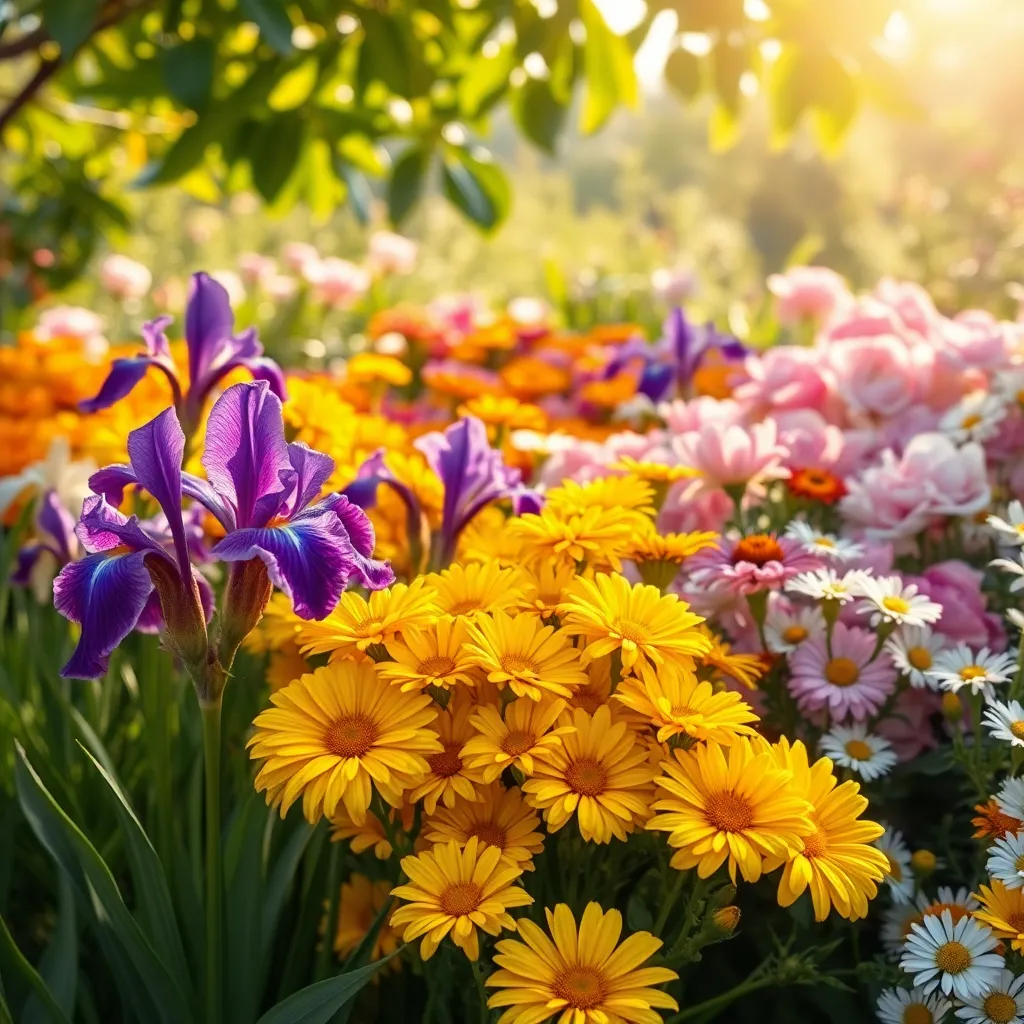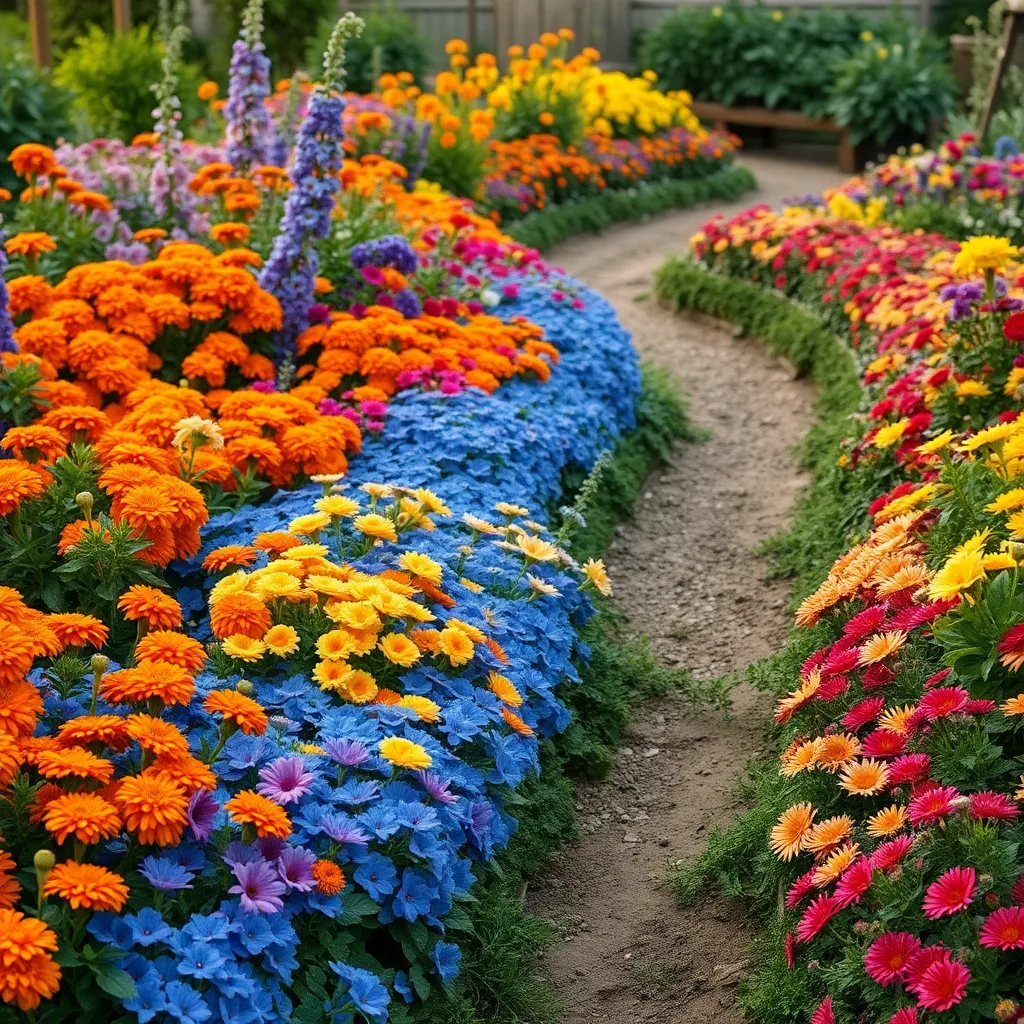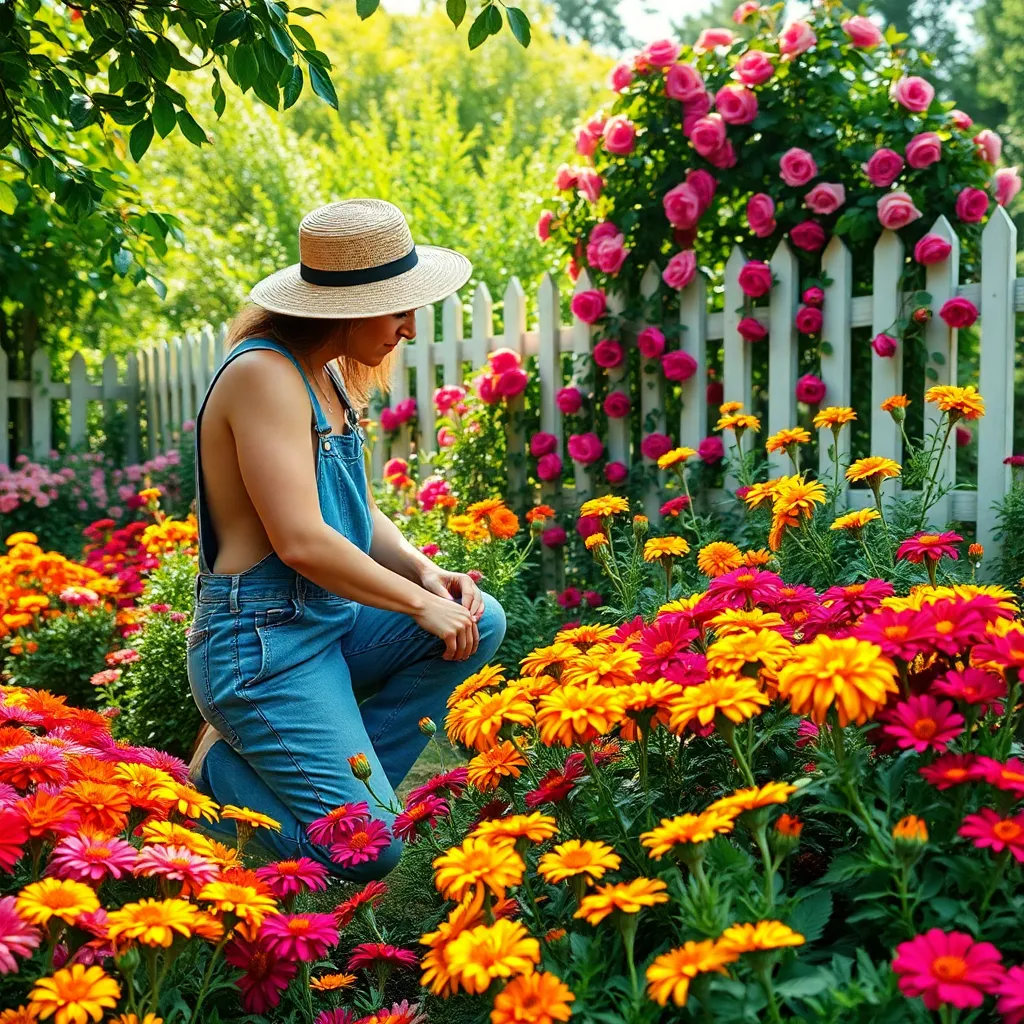Imagine strolling through your garden, where every bloom tells a story through its color—a symphony of petals, each hue harmoniously blending into the next. Whether you’re just planting your first seeds or have been nurturing your garden for years, creating a color theme can transform your outdoor space into a masterpiece of nature’s palette. The art of color-themed gardening doesn’t just enhance the beauty of your landscape; it also brings coherence and tranquility, making your garden a place of personal expression and joy.
For those just beginning their gardening journey, choosing a color theme might seem like an overwhelming task, but it’s a delightful opportunity to let your creativity shine. This article will guide you through the basics of color theory, helping you understand how to pair plants for maximum impact without feeling intimidated. Experienced gardeners will find inspiration in exploring advanced techniques, such as seasonal transitions and creating focal points, ensuring that every visit to your garden is a feast for the senses.
Throughout this journey, you will discover practical tips on selecting plants that thrive in your climate while complementing your chosen color scheme. From bold, vibrant combinations to soft, soothing pastels, you’ll learn how to craft a garden that reflects your unique style and vision. So grab your gardening gloves, and let’s embark on this colorful adventure together—one where every bloom contributes to a stunning visual narrative that evolves with the seasons.
Choosing Your Garden Palette

Choosing a color palette for your garden is an exciting opportunity to express your personal style through nature. Begin by considering the mood you want to evoke—vibrant, calming, or perhaps a blend of both.
Evaluate the existing color elements in your garden, such as fences, pathways, or nearby structures, which can guide your plant choices. Matching or contrasting colors with these elements can enhance the overall aesthetic.
Consider seasonal changes when selecting plants, aiming for a garden that offers interest year-round. For instance, combine early bloomers like tulips with summer mainstays like roses, and add fall-interest plants such as chrysanthemums.
When planning your palette, think about the size of your garden. In small spaces, sticking to a limited palette of two to three colors can create a harmonious look, while larger gardens can handle a more diverse mix.
For beginners, starting with a monochromatic scheme can be easier to manage. Choose different shades of the same color, such as various blues or purples, to create depth without overwhelming the senses.
Advanced gardeners might experiment with complementary colors, which sit opposite each other on the color wheel. Pairing colors like orange and blue or yellow and purple can make your garden pop, drawing the eye and adding visual interest.
Soil type and sunlight are crucial factors that affect your plant choices and their colors. Ensure that your chosen plants are suitable for your garden’s specific conditions by checking light requirements and soil preferences before planting.
Understanding Color Wheel Basics

Understanding the color wheel is essential for creating a harmonious flower garden. By using the color wheel, gardeners can select flowers that either complement or contrast with one another, resulting in a visually appealing display.
A basic understanding of the color wheel involves recognizing the primary colors: red, blue, and yellow. These are the building blocks for all other colors, and knowing how they interact can help you plan a garden that is both vibrant and cohesive.
For beginners, starting with complementary colors—those directly opposite each other on the wheel like purple and yellow—can create striking contrasts. This technique draws the eye and makes each flower stand out more vividly against its counterpart, which can be a stunning addition to any landscape.
Experienced gardeners might explore using analogous colors, which are next to each other on the wheel, such as red, orange, and yellow. These combinations offer a more subtle and harmonious transition, creating a soothing and unified appearance in your garden.
To effectively use the color wheel, consider the specific growing conditions of your chosen plants. Ensure that each plant’s needs for soil type, sun exposure, and watering are compatible, as this will help them thrive and maintain their vibrant colors.
Soil selection is crucial for color vibrancy; for instance, rich, well-draining soil often brings out the best hues in flowers. Regular watering is also key, but be mindful of each plant’s specific requirements to avoid over or under-watering, which can dull their colors.
By understanding and applying these color wheel basics, you can craft a garden that not only flourishes but also captivates with its expertly blended palette. Whether you’re mixing bold contrasts or blending gentle hues, the right color choices can transform your garden into a work of art.
Selecting Harmonious Flower Varieties

Choosing harmonious flower varieties involves understanding how different colors interact within your garden space. Start by selecting a primary color and build around it using complementary or analogous colors to create a visually pleasing effect.
When considering plant varieties, it’s essential to match their growing conditions with your garden’s environment. Ensure your selections are suited to your soil type, whether it’s sandy, clay, or loamy, and check that they thrive in your garden’s sun or shade profile.
For beginners, starting with easy-to-grow flowers like marigolds or zinnias can be rewarding. These flowers are not only vibrant but also adaptable to various soil conditions and require moderate watering, making them an excellent choice for those new to gardening.
Experienced gardeners might try experimenting with a monochromatic theme using different shades of the same color. This technique can be particularly striking, and you can add depth by incorporating plants with varied textures and heights, such as tall snapdragons alongside spreading petunias.
Regular maintenance is key to keeping your color-themed garden healthy and vibrant. Water your garden deeply but infrequently to encourage deep root growth, and consider using mulch to retain soil moisture and reduce weeds.
Planting for Seasonal Color Impact

For vibrant seasonal color, it’s essential to select plants that thrive in your specific climate and soil type. Consider using a mix of annuals and perennials to ensure continuous blooms throughout the growing season.
Annuals like marigolds and zinnias deliver bold colors and can be planted in early spring once the threat of frost has passed. These plants flourish in well-drained soil and require regular watering, especially during dry spells, to maintain their vibrant hues.
Perennials such as daylilies and coneflowers provide recurring splashes of color year after year. If you’re looking for low-maintenance options, choose perennials that are native to your area, as they are adapted to local conditions and often require less care.
To extend your garden’s color palette through different seasons, consider planting bulbs like tulips and daffodils for spring blooms. Plant them in the fall, about six inches deep in nutrient-rich soil, and ensure they receive plenty of sunlight to encourage healthy growth.
For an advanced gardening approach, try succession planting to maximize your garden’s color impact. This technique involves planting new flowers as others fade, ensuring a constant display of blooms—just be sure to regularly deadhead spent flowers to promote continuous flowering.
Maintaining Your Colorful Display

To maintain your colorful display, regular deadheading of flowers is essential to encourage continuous blooming. This simple technique involves removing spent blooms, which directs the plant’s energy towards new growth, keeping your garden vibrant.
Keep an eye on your plants’ water needs, as consistent moisture is key to sustaining their lush appearance. Generally, most flowering plants thrive with about one inch of water per week, but this can vary depending on your soil type and climate.
Feeding your plants with a balanced fertilizer every four to six weeks can significantly enhance their color intensity. Opt for a slow-release fertilizer or a liquid feed, ensuring you follow the instructions for application rates to avoid over-fertilizing.
Incorporating a layer of organic mulch around your plants not only conserves soil moisture but also suppresses weeds that compete for nutrients. Mulch helps maintain a stable soil temperature, which is beneficial for root health, contributing to overall plant vigor.
For advanced gardeners, consider using color-enhancing techniques, such as experimenting with pH levels for certain plants like hydrangeas. By adjusting the soil acidity, you can manipulate the color of the blooms, adding a personalized touch to your garden display.
Conclusion: Growing Success with These Plants
Creating a color theme for your flower garden is a delightful journey that mirrors the vibrant tapestry of relationships. We’ve explored five key concepts: understanding color psychology to reflect your desired emotional ambiance, harmonizing colors to create a cohesive visual experience, balancing bold and subtle shades for dynamic interest, considering seasonal blooms to ensure year-round beauty, and personalizing your garden to reflect shared values and memories. These principles not only enhance your garden but also nurture the bonds you cherish.
As an immediate next step, choose a color palette that resonates with the essence of your most treasured relationships and begin planning your garden layout. Whether it’s the passionate reds of romance or the calming blues of friendship, let your garden tell a story.
We encourage you to save or bookmark this article as a valuable resource in your relationship journey. As you cultivate your garden, remember that nurturing relationships requires the same thoughtful care. By weaving these concepts into your life, you’re planting the seeds for lasting connection and growth. Here’s to a future blooming with vibrant, flourishing relationships!

